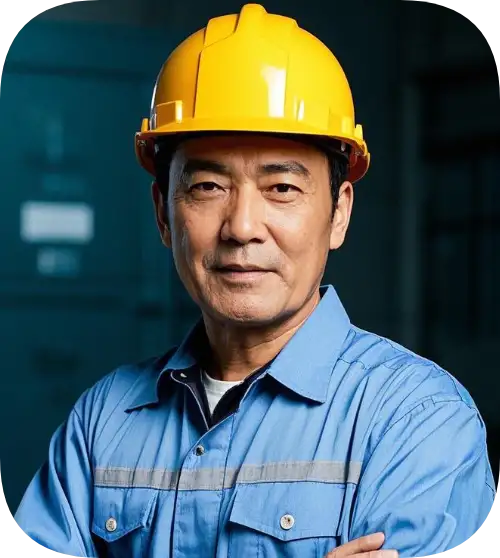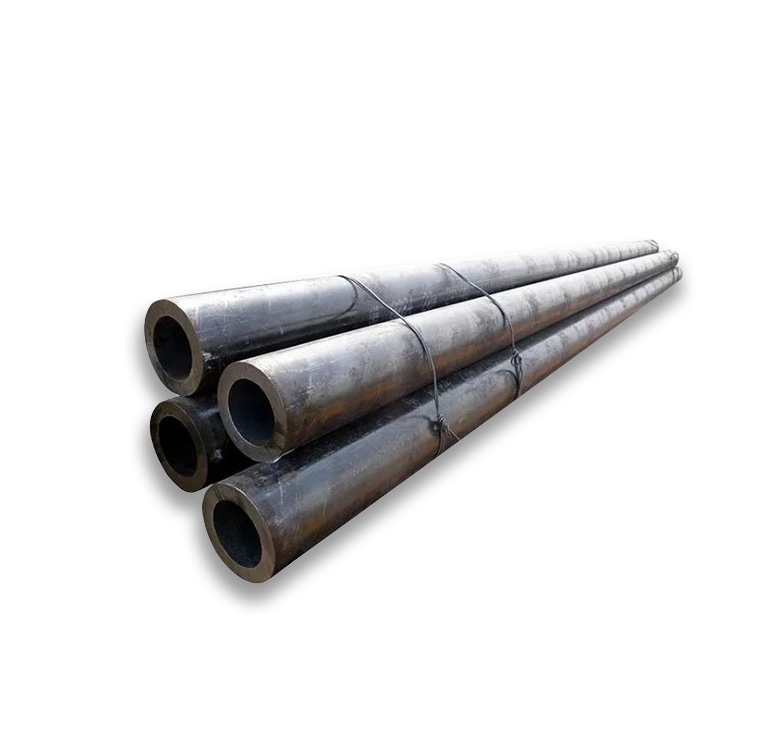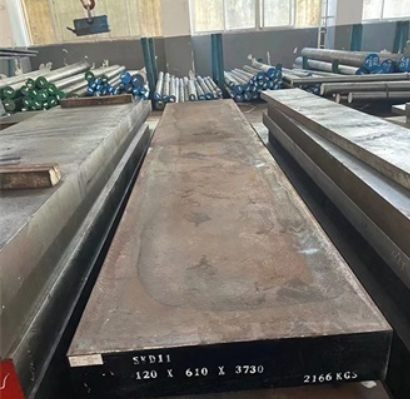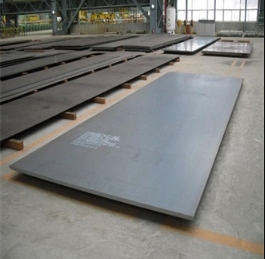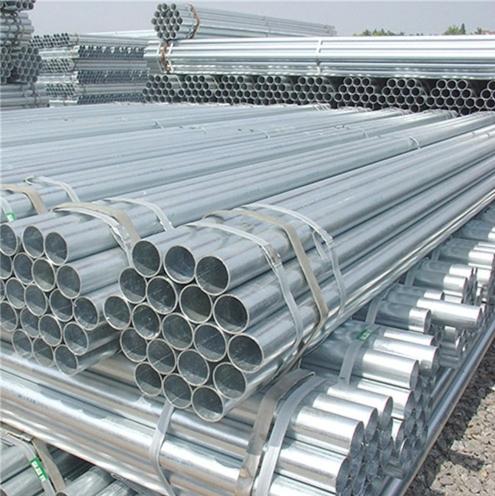For 2025 we find that AWWA C110 (full-body flanged) ductile-iron fittings sit on a broad price spectrum: small common fittings (2″–12″) bought through U.S. distributors typically list from roughly $60–$700 per piece (depending on size, lining and coating), while Chinese factory direct prices for smaller production runs can be under $5–$40 per piece or $875–$1,300 per tonne for bulk castings — larger, specialized fittings and large-diameter items quickly rise into the thousands to tens of thousands USD per piece. Price differences are driven by size/weight, lining and coating, certification, volume, and transport/tariff costs. We supply, fabricate and export AWWA-C110 fittings from China (Luokaiwei) and advise buyers to specify exactly the AWWA edition, lining/coating options and test certificates before comparing quotes.
What AWWA C110 covers and why it matters
AWWA C110/A21.10 sets dimensional, material and testing requirements for full-body ductile-iron and gray-iron fittings (generally 3″ through 48″, though common industry practice covers many sizes). Specifying C110 matters because it fixes face-to-face dimensions, flange drilling and pressure ratings so fittings from different suppliers remain compatible with AWWA-standard pipe and flanges. Correctly calling out the standard in a purchase order reduces ambiguity and prevents costly rework.
Typical products covered by C110
Most AWWA C110 product families are familiar to utility and pipeline teams:
-
45° / 90° bends (short & long radius)
-
Tees (equal/reducing, side-outlet)
-
Crosses
-
Concentric/ eccentric reducers
-
Outlet tees, base elbows and special fabricated pieces
-
Flanged adapters and flanged spigots
Sizes usually run from small service sizes through large distribution mains (1″ up to 48″+ in some catalogs). The physical weight increases rapidly with nominal diameter — and that weight is the single biggest driver of material cost.
Material grades, lining and coatings that change cost
We always specify the following clarifications in RFQs because they change price materially:
-
Base metal: ductile iron to ASTM A536 (common grades like 60-42-10) is standard. Higher mechanical requirements cost more.
-
Internal lining: cement-mortar lining per ANSI/AWWA C104/A21.4 is typical for potable water — double thickness for larger sizes. Ceramic epoxy (P401) or FBE adds cost.
-
External coating: asphaltic seal coat is basic; FBE, epoxy, zinc or Zinalium/Zn-Al alloy plus paint add price.
-
Accessories: bolts, gaskets, test plugs, tapping sleeves — priced separately.
Each choice shifts unit cost: for example, basic cement-lined black-coated C110 fittings are the baseline; specifying P401 ceramic lining or FBE coating normally adds a premium that can be significant on larger fittings. Where sanitary or industrial applications require special linings, lead times and per-unit costs increase.
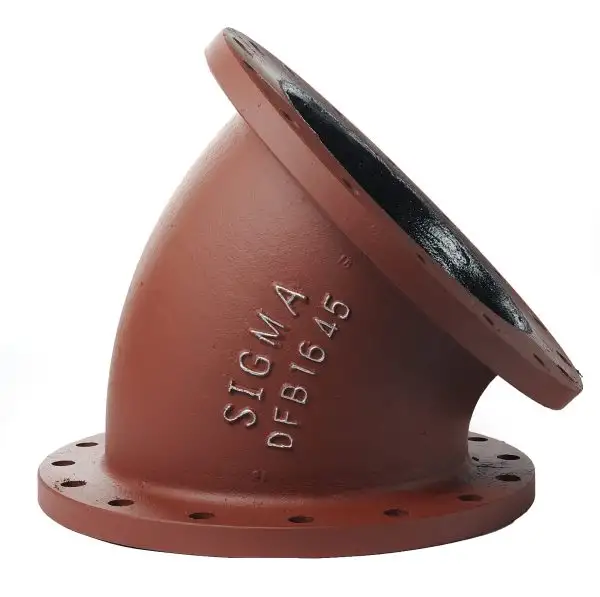
How manufacturers (and we) compute price — elemental breakdown
When we quote a C110 fitting we break the price into transparent components:
-
Raw material (weight × steel/iron scrap price or casting alloy cost). Material is typically >40% of cost for heavy fittings.
-
Foundry & pattern costs. Complex cores, special contours and larger patterns increase casting costs.
-
Machining time. Flange faces, bolt holes and finishing add machine hours.
-
Lining/coating application and curing. Cement lining is relatively low cost; FBE or ceramic epoxy is costlier.
-
Testing & QA documentation. Hydrostatic tests, dimensional reports, chemical and mechanical test certificates (MTC) add cost.
-
Packing, export handling and logistics. Heavier parts push freight and packing costs up (LCL vs FCL, project crates).
-
Overhead & margin (manufacturer + distributor). Distributors add markup to cover inventory risk and local service.
Because weight is dominant, a 24″ bend can cost many times a 4″ elbow even if both are “C110”.
Market context and 2025 cost drivers
Several 2025 drivers influence pricing we’re seeing:
-
Raw material trends: scrap and foundry alloy prices remain a leading variable. Global supply of scrap and pig iron affects foundry gate price.
-
Energy & labor: energy for melting and regional labor rates change per-ton cast cost.
-
Compliance & testing: stricter project QA or third-party test requests (MTC, PMI, traceability) increase cost and lead time.
-
Freight & container costs: although improved from 2021–22 peaks, ocean freight and port congestion still impact landed price for export purchases.
-
Regional demand and infrastructure spend: municipal programs in North America and Europe pin up demand for replacement/upgrade work, supporting distributor list prices. Market research sources project steady market growth into 2025.
Representative global price comparison (2025): quick table
Below we present typical, representative price windows collected from distributor price lists, Chinese factory offers and manufacturer PDFs. These are indicative ranges (specification, lining and size change everything). We list sources so you can trace them.
| Region / Channel | Typical small-fitting price (2″–12″) | Price per tonne / bulk | Notes & source |
|---|---|---|---|
| China — factory (OEM, low MOQ) | US$0.5 – US$40 / piece | ~US$875 – US$1,300 / tonne (bulk castings) | Many factory listings on Made-in-China / Alibaba show sub-$5 pieces for simple grooved items; castings quoted per ton for bulk orders. |
| China — export (factory FBE/P401) | US$5 – US$60 / piece | Negotiable (MOQ, liner) | With FBE or ceramic lining and export packing, price rises; lead time and certifications add cost. |
| USA — distributor / retail | US$60 – US$700+ / piece | N/A (mostly per piece list) | Distributor price lists and online retailer listings show per-piece list pricing; large special fittings can be quoted POA. |
| Europe — manufacturer / OEM (e.g., Saint-Gobain PAM, AVK) | €70 – €1,500+ / piece | N/A | European producers publish product guides and price lists; coated/linings per project add to cost. |
| Project / fabricated large fittings | US$10,000 – US$100,000+ / piece | N/A | Large fabricated assemblies (e.g., 30″x30″ bases, specialty tees) may appear in distributor price lists with five-figure values. |
Note: the Chinese factory low-end figures typically apply to grooved or basic mechanical joint items in large minima; AWWA-C110 full-body flanged, cement-lined items intended for potable water with third-party QA will be toward the higher end of the quoted windows.
Example SKU pricing (real distributor numbers)
To make this concrete, here are representative line items we pulled from distributor price lists and catalogs (list price examples — use these only as a benchmark):
-
3″ Blind Flange (C110 cement lined) — $66 list.
-
4″ Flanged bend (180°) DI — listed as POA for many distributors; smaller bends (4″, 6″, 8″) in some price lists show $62–$172 range.
-
30″x30″ large fabricated flange assembly — $32,510 (example from a catalog price list showing heavy fabrication items). This shows how large fittings become high-value line items.
These list prices typically exclude special linings (P401), accessories, project testing and international freight. A true landed project cost must include those.
How to prepare an accurate RFQ (what we ask for)
When we reply to RFQs we require these minimum items — without them you’ll get wide price variance:
-
Standard & edition: e.g., ANSI/AWWA C110/A21.10 (2021 edition). Confirm joint type (flanged or mechanical) and whether C153 alternatives are acceptable. store.awwa.org
-
Nominal diameters and individual part codes (detailed bill of quantities) — each size is priced differently.
-
Lining/coating spec: cement-mortar per C104, P401 ceramic, FBE, zinc, etc. Include thickness.
-
Pressure rating & flange class (125#/250# or AWWA face drilling).
-
Inspection & certificates required: MTC EN 10204/3.1, PMI, third-party test, ultrasound, dimensional reports.
-
Quantity & schedule: MOQ matters — 10 pcs vs 10 tonnes changes price.
-
Destination & Incoterm: EXW, FOB, CIF, DDP — we’ll calculate freight and duties accordingly.
-
Special packaging or heat-treat needs.
Providing complete data saves rounds of clarification and avoids hidden price increases.
Quality, testing and certificates that affect price
Buyers who ask for the following will pay more but reduce project risk:
-
MTC (3.1/3.2) and chemical/mechanical test reports for each heat.
-
Dimensional check reports and hydrostatic test certificates.
-
Third-party inspection (SGS, Intertek, TÜV).
-
Coating test certificates (FBE thickness, adhesion).
We recommend specifying the minimum certificates needed for acceptance and be explicit about acceptance sampling (e.g., 100% hydro test for pressure parts; 10% chemical sampling is common unless the project requires otherwise).
Logistics, tariffs and landed cost (practical checklist)
When comparing domestic distributor prices vs Chinese export offers, include:
-
Ocean freight (FCL / LCL) — heavy castings consume volume and weight; shipping is rarely negligible.
-
Port handling & customs clearance fees.
-
Import duties and VAT. Tariff codes vary by country — check local HS classification and anti-dumping measures.
-
Local transport to site and lifting/cranage costs.
-
Storage & on-site handling (rust protection, re-coating if required).
A low FOB price may be offset by high freight + duties. We always build a landed cost worksheet before awarding a contract.
Procurement strategies to reduce total cost
From our experience managing global orders, the most effective tactics are:
-
Consolidate volumes: larger single orders reduce per-piece unit cost and freight.
-
Standardize linings/coatings: fewer finish variants reduce pattern changes and MOQ friction.
-
Use framework agreements: lock unit prices for a calendar period with call-offs to reduce admin.
-
Test on samples first: pay a sample or prototype fee to lock technical acceptance before full runs.
-
Negotiate payment terms & inspections: partial payment on PO, balance on inspection acceptance is standard.
Common pitfalls we see on bids
-
Unclear standards: quoting “C110” without edition, lining or flange drilling leads to mismatches.
-
Ignoring accessories: bolts/gaskets/bolting kits often omitted then billed separately.
-
Assuming “same” compatibility: EN and AWWA flanges can differ in bolt patterns and facing — always confirm.
-
Low-ball FOB quotes: these can conceal rising shipping or rework costs at destination.
FAQs
Q1 — Are AWWA C110 and C153 interchangeable?
Short answer: No. C110 covers full-body fittings; C153 covers compact (short-body) fittings. The two have different face-to-face dimensions and weights; you must use the standard requested by the piping designer.
Q2 — How much extra does a P401 ceramic epoxy lining cost vs cement?
It varies by size and supplier. Expect a noticeable premium — ceramic linings add materials and process steps. For large projects, get separate line item pricing per size so you can compare lifecycle benefits versus upfront cost. (Price premium examples are specific to supplier quotes.)
Q3 — Can we buy C110 fittings cheaper from China and accept them in the USA?
Yes — many buyers source competitively from Chinese foundries. But ensure the fittings meet the exact AWWA edition, MTC and third-party inspection requirements. Add freight, duty and port handling into your landed cost to compare properly.
Q4 — Why do some distributor price lists show “POA” (price on application)?
Large or irregular fittings have highly variable weight and machining requirements; distributors use POA to avoid underquoting. For such items, supply sample part details or drawings to obtain fixed pricing.
Q5 — What’s the lead time for standard cement-lined flanged C110 fittings?
Lead time depends on quantity and factory workload. For stocked items in distributor warehouses, it can be days to weeks. For production runs from foundry to exported finish, plan 8–16 weeks as a pragmatic baseline; faster timelines incur premium charges.


